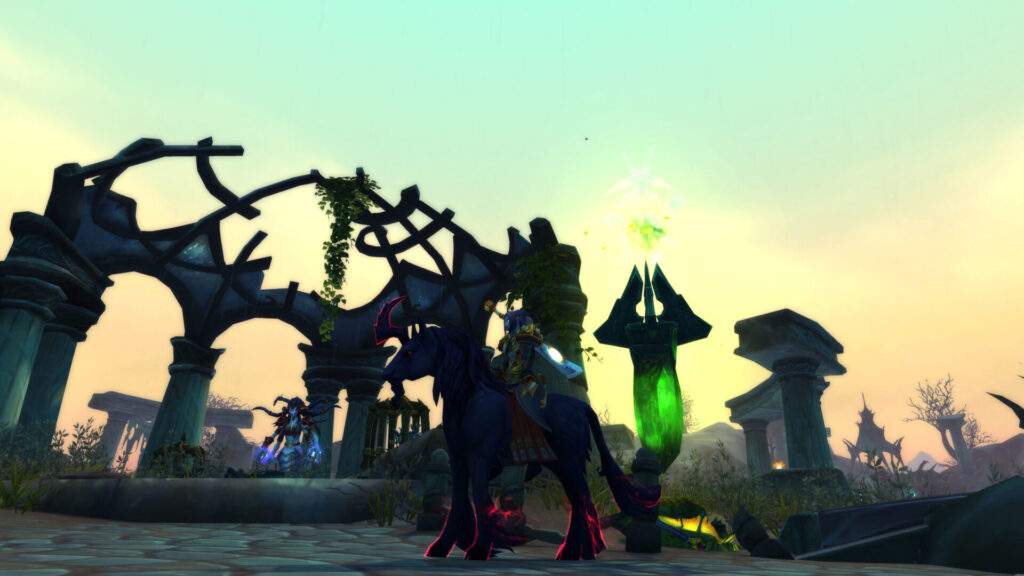
The True Cost of Raiding in Classic
Preparing for a raid in WoW Classic is far from simple. Every serious player knows that gold is the silent requirement behind every boss kill. Before you even set foot inside Molten Core, Blackwing Lair, or Naxxramas, you need to spend hundreds of gold on flasks, potions, enchants, and repairs. Even small details like sharpening stones, food buffs, and reagents can add up quickly. A single night of progression can drain your wallet faster than any wipe. For casual players, this level of financial upkeep often becomes exhausting. Farming enough gold for weekly raids requires hours of repetitive grinding, leaving little time for the actual gameplay that makes Classic enjoyable.
This is why many raiders look for smarter, faster solutions. Buying WoW Classic gold provides the means to prepare efficiently without sacrificing your free time. Instead of farming for hours, you can focus on what truly matters—understanding raid mechanics, fine-tuning your gear, and coordinating with your guild. Having gold ready removes unnecessary stress and ensures you’re always stocked with what you need. It doesn’t replace skill or effort; it supports both by giving you the freedom to play better, focus longer, and perform consistently during every encounter.
What Every Raider Spends Gold On Before a Raid
Even players who farm daily often underestimate how much gold a single raid week can cost. Consumables alone can consume hundreds of gold depending on your class and the content you’re tackling. Tanks rely on expensive defensive flasks and potions, healers burn through mana elixirs and oils, and DPS players use every available damage boost to stay competitive. Add enchants, food buffs, and repair bills, and your expenses climb fast. The deeper your guild progresses, the higher the cost becomes. Every new raid phase means new requirements, more consumables, and greater preparation costs.

A fully prepared player can easily spend between 500 and 1,000 gold per week if they aim to raid at the highest level. Below is an example of average raid preparation costs that every serious player faces:
| Expense Type | Estimated Weekly Cost | Purpose |
|---|---|---|
| Flasks & Potions | 200–400 gold | Raid performance boost |
| Food Buffs | 50–100 gold | Stat increases and sustainability |
| Repairs | 50–150 gold | Durability recovery |
| Resistance Gear | 100–250 gold | Required for specific bosses |
| Enchants & Oils | 100–200 gold | Maximizing gear potential |
When you multiply these costs across several weeks, it’s easy to see why even dedicated players choose to buy gold. It keeps them consistently prepared without draining their free time or energy.
Why Farming Isn’t Enough for Serious Raiders
Farming gold has always been part of Classic, but it’s one of the least enjoyable and most time-consuming tasks in the game. Gathering herbs, killing elementals, or grinding dungeons for hours may earn enough for basic supplies, but it doesn’t come close to covering full raid costs on a regular basis. With so many players farming the same resources, competition is fierce. Popular zones are often overcrowded, and bots drive market prices even higher, making it difficult for honest players to keep up.

For raiders balancing work, school, or family life, the situation becomes worse. Spending ten or more hours every week just to fund consumables leaves little time for raiding itself. The effort outweighs the reward. That’s why buying the cheapest WoW gold before each raid reset is a practical and time-saving choice. It allows players to skip the endless grind and enter raids fully prepared. Instead of worrying about farming routes or empty herb nodes, they can focus on performance, teamwork, and enjoyment. Buying gold isn’t a shortcut—it’s a strategic decision for players who want to maximize their time and energy while still performing at the top level.
How Buying Gold Simplifies Raid Preparation
Once you have enough gold, preparing for raids becomes smooth and predictable. Instead of spending hours grinding mobs or chasing herb respawns, you can buy everything you need within minutes. The Auction House becomes your greatest ally—you can stock up on consumables, secure enchants for new gear, and even purchase resistance gear without delay. This not only saves time but also ensures you’re never caught unprepared for a raid night. The key advantage is consistency; having gold ready means you can maintain full readiness every single week, not just occasionally when farming went well.

Buying the cheapest WoW gold before raid resets helps you control your preparation schedule. You can organize your bags, restock consumables, and handle repairs with zero stress. Guild leaders especially appreciate well-prepared players who show up ready to pull without last-minute delays. The difference in time efficiency is massive, as shown below:
| Preparation Method | Time Spent Weekly | Raid Readiness | Player Focus |
|---|---|---|---|
| Manual Farming | 10–15 hours | Inconsistent | Fatigued before raid |
| Buying Gold | 10 minutes | Always ready | Focused and relaxed |
By removing the grind, players regain time to enjoy the game’s best parts—raids, coordination, and team progress. Instead of logging in to farm, they log in to win.
The Gear and Enchant Advantage
Gold doesn’t just buy consumables—it buys opportunity. Having enough gold means you can acquire best-in-slot crafted gear, expensive enchants, and rare consumables long before most players can. This creates a measurable edge in performance, survivability, and contribution to your team. Tanks can invest in top-tier crafted pieces like Titanic Leggings or Lionheart Helm, while DPS classes can pick up weapons or enchants that push their numbers higher. Even healers benefit, as access to mana potions, oils, and enchantments reduces downtime and increases throughput during long fights.

Many of these upgrades are simply out of reach for players stuck farming minimal income. For example, high-end enchants like Crusader, Healing Power, or Spellpower can cost hundreds of gold each. Crafted resistance gear for bosses such as Sapphiron or Huhuran often requires rare materials that sell at inflated prices. Buying gold allows you to gather everything in advance without waiting weeks to collect the materials yourself.
Common High-Cost Upgrades That Define Raid Readiness:
- Epic weapons and armor crafted from rare materials.
- Expensive enchants for main-hand and chest slots.
- High-value consumables like Flask of Titans and Greater Arcane Elixir.
- Resistance gear required for key raid encounters.
- Reagents and potions for class-specific buffs and spells.
When every player in a raid invests properly in their preparation, the team’s overall performance skyrockets. Gold isn’t just convenience—it’s power translated into results.
How Guilds Benefit from Well-Prepared Players
A guild’s success depends heavily on how ready its members are. Players who consistently bring full consumables, optimized gear, and proper enchants make progression smoother and faster. It reduces downtime, wipes, and repair costs for the entire group. When everyone shows up prepared, raid leaders can focus on execution instead of managing shortages or organizing last-minute material trades.
Having gold also builds reliability. Guilds value players who are dependable, and being prepared week after week shows commitment. Many top-tier guilds even prioritize recruiting players who understand the importance of preparation—and those players often have the gold to back it up.
Guild-Wide Benefits of Financial Readiness:
- Fewer failed pulls due to missing consumables.
- Faster progression through difficult encounters.
- Less wasted time between attempts.
- Improved morale and coordination across the raid team.
- Stronger reputation as a disciplined and effective guild.
Buying gold allows players to contribute at their best every raid. It keeps the team strong, minimizes stress, and lets everyone focus on enjoying the content instead of worrying about missing supplies. In the end, preparation built on smart gold management benefits the entire group—not just the individual.





